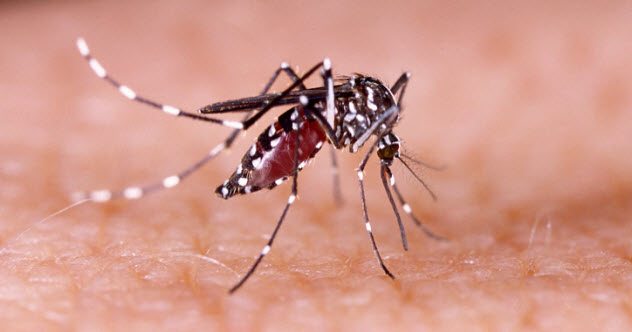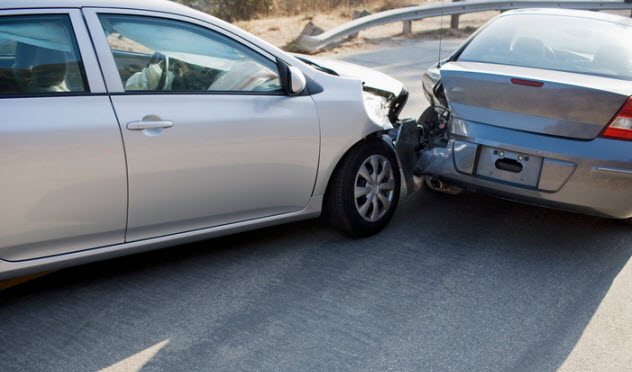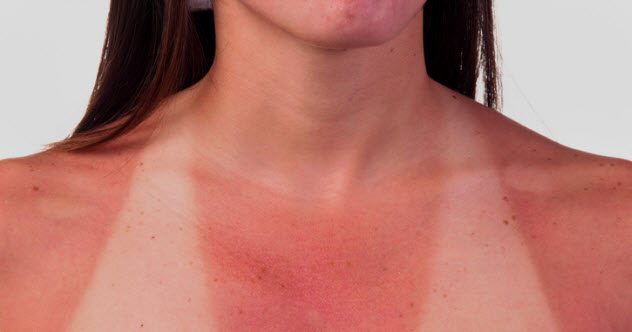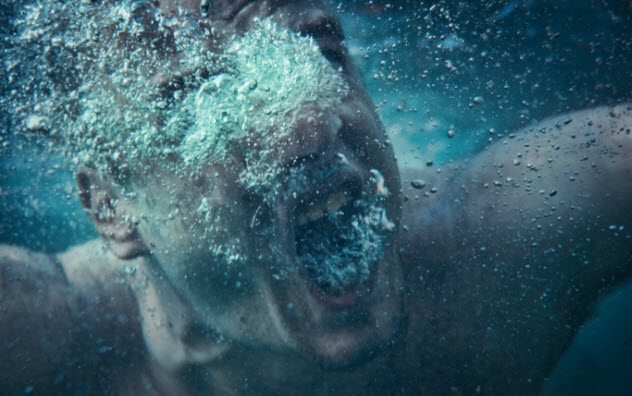But summer is also one of the most explosive times of the year. Maybe it’s the carefree attitudes or the heavy volume of traffic that sets this season apart from the others. Whatever the underlying reason may be, one thing is clear: Summer kills.
10 Things That Fly
With 176 known species in the United States, mosquitoes are everywhere. Most people don’t give these small pests a second thought. Hibernating during the wintertime, they reemerge when the temperature reaches roughly 10 degrees Celsius (50 °F). They thrive in hot weather, and their season will reach its peak accordingly. They are not just a nuisance for causing red, itchy bumps. They sadly pose a more serious threat. Often, people associate mosquito-borne illnesses with less developed countries. However, that is far from true.[1] Each year, over 1,000 Americans contract serious illnesses or die as a result of mosquito bites. Mosquito-borne diseases that are frequently documented include West Nile virus, dengue, chikungunya, and even the Zika virus. The West Nile virus is the most commonly seen of those few. In extreme cases, it can cause brain damage and even death. In recent years, dengue has also increased in occurrence. The mosquitoes that transmit these diseases are active both day and night, making the problem seemingly impossible to avoid and contain.
9 Car Accidents
As if driving wasn’t dangerous enough already, it seems as though the distractions and hazards reach new highs in the summer. The sheer volume of people on the road during the summer is enough to cause havoc and provoke anxiety. Many are traveling and vacationing. New drivers are also out of school, ready to use their newfound freedom. To no one’s surprise, young drivers, ranging in age from 15 to 20, are responsible for a substantial number of traffic accidents during the summer months, more than any other time of the year. During these months, there are about 16 traffic accidents per day involving those in that age range. New drivers are not the only determinant that makes summer a dangerous time for those on the roads. Weather conditions also seem to play a role. The warmth and the sun have the effect of making people more laid-back, even carefree, which can result in accidents. During the winter, people are more cautious when driving, news stations frequently alert the public about road conditions, and fewer people are on the road. With that in mind, it doesn’t seem too far-fetched that July 3 and 4 have a long-standing record of being the deadliest days on the road.[2] Overall, people are much more alert when driving in the winter. In the summer, people just want to cruise with the top down—most likely speeding, too. The weather impacts drivers in other ways as well in the summer. Unpredictable thunderstorms and extreme conditions can pop up out of nowhere. Also, as many learned in grade school, heat makes molecules expand (i.e., the air in tires). This can lead to a blowout, which is dangerous for motorists. Warm weather also means that more people ride motorcycles and bicycles, which creates an added layer of danger for drivers. Pedestrians, too, are outside more in the warmer months. Road congestion and heavy traffic may spark road rage as well. It is almost as though the list of summertime driving dangers is endless.
8 ‘Trauma Season’
Health-care workers refer to the summer months as “trauma season.” Reports from Children’s Hospital of Pittsburgh show that the number of kids seen per month doubles during the summertime for traumatic injury–related incidents. Adult trauma cases also increase at this time of year. Among the most common category of injury in the summer is falls. It’s not just senior citizens, though. Kids on jungle gyms, skateboards, slippery pool decks—you name it—everyone seems to lack balance during this time of year. Ambitious “do-it-yourselfers” climbing ladders and engaging in other risky activities are likely candidates for fall-related injuries. Studies show that if a person falls more than 9 meters (30 ft), they have a 50 percent chance of dying. In years past, falls have sometimes surpassed car accidents as the top contender for hospitalization.[3] Usually, falls are preventable. Allowing kids to play outside and be active is important, but proper supervision is equally as important. Is it still considered an accident if a fall is preventable? Falling is not the only trouble that people manage to get into during the summer. Lawn mowers, bicycles, trampolines, and ATVs are all responsible for sending people to the hospital as well.
7 Fairs, Carnivals, Amusement Parks—Oh, My!
We’ve all heard the stories of people getting hurt at an amusement park, but we pretend it could never happen to us. (This is called third-person or bystander effect.) It’s not rare to see roller coasters and other rides “stuck” at the end of a long day of toting thousands of passengers around. All too often, things become more dangerous than just a ride becoming stuck or ceasing to work at the end of a hot, busy day. Annually, around 4,000 are injured at amusement parks and fairs combined. It’s all fun and games until someone’s seat belt breaks loose during a roller coaster ride. Horror stories of children falling off rides and even being decapitated paint a nasty image of these places to which we go for a good time. From waterslides to Ferris wheels, the ways to become injured are endless. In 2016, an 11-year-old girl was scalped after her hair was caught in a carnival ride. It took a horrifying 10 minutes for the operator to stop the ride, as the child’s mother and other bystanders watched the incident unfold.[4]
6 Too Hot To Handle
Heatstroke and dehydration are all too familiar. Every year, people find themselves experiencing these two illnesses as a result of the blazing summer heat. Dehydration is defined as the excessive loss of body fluids. It’s no secret that the human body can’t function properly without water, so dehydration can be very dangerous in certain conditions. Water loss and electrolyte loss are two different types of this condition. But the primary focus is preventing and treating it properly. Remembering to drink water throughout the day is vital to remaining hydrated.[5] Most physicians say that 8 to 10 glasses of water per day are enough to keep one hydrated. However, this varies from person to person and depends on the weather conditions. Once full-blown dehydration kicks in, things get hairy. Twitching, lethargy, confusion, convulsions, and even delirium are all symptoms of this. Heatstroke is often seen in conjunction with dehydration. The symptoms of heatstroke, a form of hyperthermia, can vary—ranging from confusion and disorientation to coma. Affecting both young and old, heatstroke is usually considered a medical emergency and must be treated by a physician. In the summer months, this condition is often caused by overexertion.
5 Burns
Burns are rampant in the summer months. However, grilling and sunburns are not the only ways people end up burned. Every summer, around 10,000 Americans are injured by fireworks. (Half of these incidents occur just within the first week of July.)[6] Sunburn is the silent killer. Although it rarely results in hospitalization, the lasting impacts are becoming increasingly apparent to researchers. Those who suffer from numerous sunburns as kids and young adults are at greater risk of skin cancer later in life. Sunburn can also cause more immediate side effects like heatstroke, dehydration, sun poisoning, fainting, and even seizures in extreme cases.
4 Water Dangers
Water incidents are an inevitable factor when the weather gets warmer. Beaches and pools are at capacity, with children and adults sharing an equal love for the water. It’s a summer staple for most. Drowning would be a gruesome way to die. In fact, it is the third-leading cause of unintentional death. The CDC estimates that about one in five people who die from drowning are under age 14. That leads one to think that those deaths could have been prevented with proper supervision or even swim instruction. Swim lessons can prove effective for many and are strongly recommended for those who live by or are planning on traveling to an area with water. Life jackets for youngsters can also save lives.[7] There are other ways in which people find themselves in dangerous situations involving water. Having a drink by the pool can be harmless at times. But there is no doubt that it can impair one’s senses to a point that swimming is nearly impossible. Rip currents are also dangerous as they can appear in seconds and snatch a small child right off the sand. What hides under the water’s surface can also threaten the lives and health of swimmers. Bacteria grow faster in the summer months and often can be found in both natural and man-made bodies of water. Naegleria fowleri is a commonly used example. This is a brain-eating amoeba that lives in lakes. Red tide is something to which most beachgoers are accustomed. This is when the bacteria levels reach a certain threshold and cities are forced to shut down their beaches to keep citizens safe. The rising bacteria levels are due to an increase in heat that causes an abundance of algal blooms. Red tide causes a toxic cycle that can cause serious illness in humans and kill water life.
3 Violent Crime
Although summer makes most people feel warm and fuzzy, others experience deadly urges. Homicides and violent crimes rise with the temperature. In a study conducted by the University of Albany, it was found that these crimes have a seasonal pattern, peaking in the summer. The leading professor who oversaw the study offered two possible explanations: temperature aggression theory and opportunity theory.[8] According to temperature aggression theory, people get angry (too angry) when temperatures rise. However, opportunity theory (aka stranger danger) states that people, with the tendency to be out and about more in the summer, have a greater chance of meeting strangers. Whether these theories are valid or not, one thing is apparent: Crime rates are notably higher in the summer.
2 Food
Grilling, picnicking, trying new exotic meals—it’s no wonder there are more instances of food poisoning and other food-borne illnesses when summer rolls around.[9] When interviewed, a senior food safety associate from Penn State University stated that the number of E. coli cases clearly rises in the summer. Salmonella instances also see an increase during the summer (not just from eating raw cookie dough). The US Department of Agriculture states two reasons for this seemingly sudden growth in summer. First, bacteria grow faster in the heat as they need moisture to flourish. Second, people are outside more. Most don’t think that any harm will come from cooking outside, but added precautions should be taken when doing so. Make sure that the cooking area is cleaned correctly and use proper refrigeration. Undercooking meat can also make food unsafe for consumption.
1 Animals Gone Wild
Animal attacks and injuries skyrocket in the summer months. Most reported attacks are not from bears or sharks but from more commonly encountered mammals. The CDC notes that 36 percent of all animal-related deaths were caused by what they categorize as “other mammals.” This is a collection of cows and other farm animals grouped together to make statistics easier. Dog bites also rise in the summer for some unknown reason. We could speculate that it is due to more time spent outside or children being out of school, but there is no definite answer. Snakes bite around 7,000–8,000 people annually. (Fortunately, only around six people die as a result.) Although arguably scarier, bears claim even fewer lives. On average, three people die per year from being attacked by bears. Attack statistics are hard to come by, but the thought of encountering a bear is enough to keep most people away from the woods. For many, the phobia of bees is justified when looking at the CDC’s account of bee fatalities from 1999 to 2013. The data shows that over 800 people were killed by bees during that period. Every hot spot destination and tourist attraction seems to house some dangerous wild animals. The beach has long been a popular place for tourists. Even though the numbers are relatively weak, shark attacks do still happen. National Geographic states that 93 percent of shark attacks have been on males, mainly surfers. In recent years, 2010 was the deadliest for shark attacks worldwide with 79 attacks reported.[10] Janet is a college student striving to be an educated, contributing, and well-informed member of society.

















